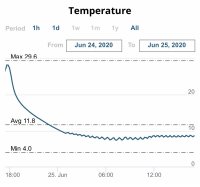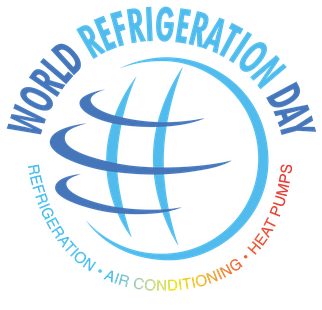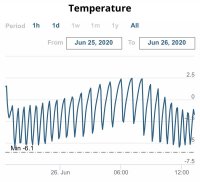Finished my own first testing-round. No lab-conditions of course and many variables not taken into account, but here are the results. First some basic information:
- I used a bluetooth thermometer inside the fridge. Placed halfway down the front wall (the wall opposite the cooling element).
- The fridge stayed closed for the entire duration of the experiment
- Fridge was completely empty
- Fridge set to 'Max'
- Van not on EHU
- Van parked in the sun
- Fridge started 'off' (temp. inside the van was 32 degrees C)
- Started at 19:30 on the 24th
- Ended at 18:17 on the 25th
- The final, steep increase in teh graph is -after- I turned the fridge off
Today (28C) and yesterday (32C) were hot days, but nothing you won't encounter on a daily basis during a summer holiday in say France, Spain, Italy or Portugal. The van was placed in the sun and kept closed. Again, not an uncommon situation during camping.
So, what have I learned?
Assuming that 4 - 6 degrees c is the ideal temperature for storing food in a fridge, it's interesting to see that
it took the fridge about 2.5 hours to reach 4c. So, if I had gone camping, I ought to have turned the fridge on at least 2.5 hours before placing food inside.
The temperature inside the fridge never went below -1c. After having had sufficient time to cool down (to 4c and eventually to -1c), it started warming up again in the morning, around 08:30.
The temperature inside the fridge never got above 8c ( with an outside temperature of approximately 28c).
So, it seems my food isn't really 'safe' in the fridge set to 'Max. At least, not when you want to store it between 4-6c. And that's at 32c, which will surely not be the hottest outside temperature we will ever encounter when travelling in the van.
Now, many of us, inc. myself have had stuff get frozen in the fridge. Some of us, inc. myself have made or stored ice cubes in the fridge. I have had beer, juice and salmon filets freeze on several occasions. I often start the fridge at 'Max' to later turn it down to '4'. I'm sure that further tests will show that the temperatures against the back wall are much lower.
But for now, I'm not really happy with the results. Because it seems that it's fairly possible that at least in part of the fridge, the 4-6c is not reached.
Planning on doing more amateur testing. Against the back wall first and later also in the middle of the fridge. At first with an empty fridge, again set at 'Max'. Later on also at setting '4' (the setting most recommended on the forums). And eventually, if I don't get bored, with a filled fridge. In the comming days the weather turns bad, so will have to wait to at least recreate the same circumstances a bit.





















